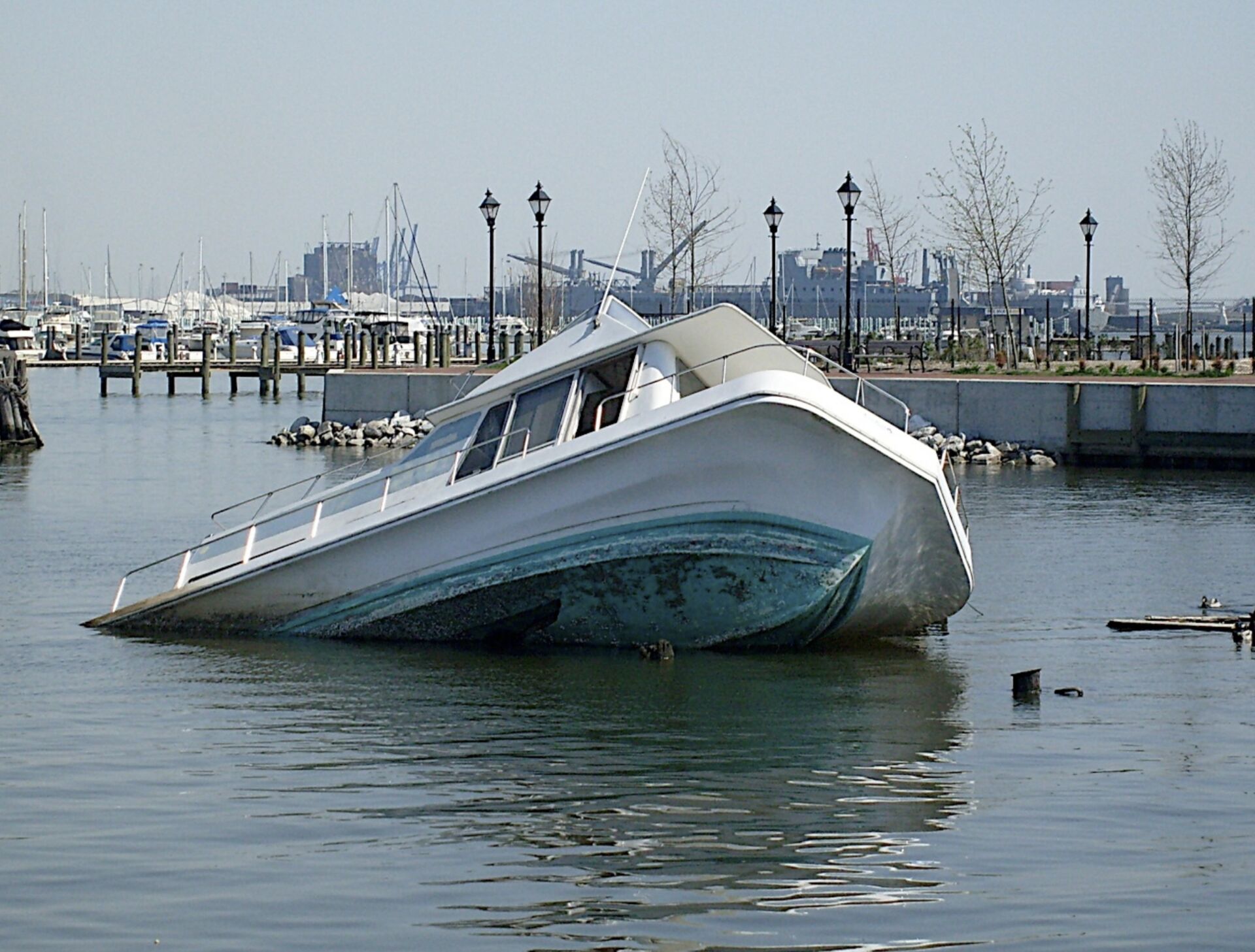
Sinkings can happen for a variety of reasons. Did know a report from a few years ago said that 69% sinkings occur at the dock. If this happens to you, what do you do? Does your boat insurance policy cover it?
Of course sinking is covered, it’s a boat, right?
If you have the wrong policy, it might not be covered. But it’s boat insurance, how would sinking not be covered? Let’s break this down.
To begin the process of adjusting the claim, the claims adjuster will have two basic questions;
- What caused the boat to sink?
- What does the policy say is covered and what is excluded?
When a claims adjuster is looking at a claim that has been filed, they are trying to determine what is the actual or proximate cause of the loss. In simpler terms, what event took place that actually caused the boat to sink. This is where if you have the wrong boat insurance policy you can get yourself in trouble.
Let’s look at an example.
That same report mentioned earlier says that 39% of the dock sinkings were from seals that had worn out. Let’s say, due to the wear and tear, the seal went bad causing water to intrude into the boat. The water intrusion leads to a sinking. This worn seal is ultimately what caused the loss and sinks the vessel. Most boat insurance policies have an exclusion for wear and tear which means any resulting loss would be excluded as well.
This is how many boat insurance contracts read, especially if the boat insurance is coming from your typical homeowner’s insurance company.
So what are the right options? What type of policy do you need that will cover such an event? The answer is a marine insurance policy with ensuing loss coverage. You may also hear this called consequential damage.
What is Ensuing Loss?
The concept of ensuing loss basically states that if the failed part causes a loss that would normally be covered, the then resulting loss is still covered, but the original failed part is still excluded. Here is how one of our companies defines it in their policy.
The following exclusions shall not apply to ensuing loss caused by consequential sinking, burning, or collision of your insured watercraft:
- Wear and tear; neglect;
- Mechanical, engine, transmission, electrical, or structural failure;
- Electrical damage not caused by lightening;
- Engine overheating, inadequate lubrication, fuel contamination or abnormal combustion;
- Mechanical breakdown;
- Gradual deterioration; deterioration caused by weathering;
- Insects, animals, birds, rodents, vermin, marine life, except if caused by collision;
- Marring, scratching, weathering, fading, chipping or denting;
- Inherent vice, wet or dry rot, mold, mildew, fungus, rust or corrosion;
- Osmotic, blistering, delamination, or bubbling;
- Latent defect. However, any resulting direct physical loss or damage to your insured watercraft resulting from the latent defect will be covered;
- Improper repair;
- Freezing, thawing, or contact with ice;
So in other words, these exclusions don’t apply in the case of ensuing loss and you are more appropriately covered.
Let’s look at the scenario above again where a worn seal caused a vessel to sink. In this instance, because the ensuing loss coverage is present on the policy, the sinking is covered.
Are you prepared?
Next time your boat insurance is coming up for renewal, or you’re at the dealership looking at a new boat, give us a call. We will make sure all your on water adventures have the best coverage available. Go ahead and put our contact information in your phone now so you have it ready. You can call or text us anytime at (513) 653-3800.
As always, remember to wear your life jacket and enjoy the water!

Written by Eric Fisher
Agency President at On The Water Marine Insurance.
Recent Posts
Share This Article
Related Articles
Bundling your boat insurance with your home policy might sound convenient, but when it comes to protecting your boat, there are often better choices. Learn why working with a marine insurance specialist can make all the difference in coverage, claims, and peace of mind.
Not all marine insurance is created equal. Discover what sets yacht coverage apart and why partnering with an experienced yacht insurance broker makes all the difference, especially if you're navigating hurricane zones, hiring a captain, or financing a high-value vessel.



